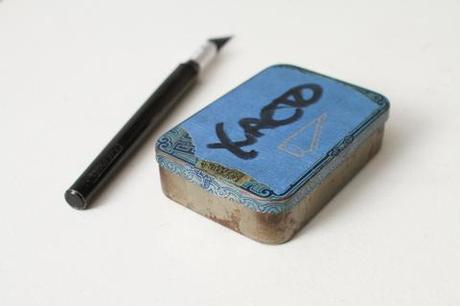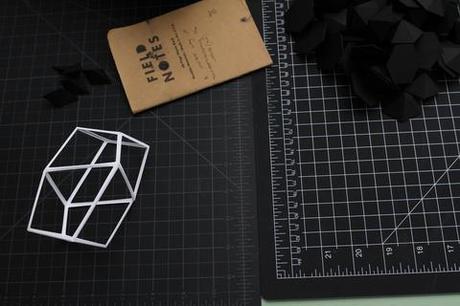
How did this project first come about?
I’ve been doing a continutation of series with Ghostly International for about two to three years. I first met Sam, the founder, at a TED Talk and he said that we should be working together. This is now our sixth series together! They’re a not a traditional record label; they work closely with their visual artists and are super supportive of their artists and are open to any ideas you present to them. It’s funny, about ten years ago, Ghostly started in Ann Arbor, Michigan, but are now based in New York and also Berlin and San Francisco.
You work with the “increasingly nebulous space between art and engineering.” What draws you to each? Are there any challenges you face between the two?
My background is in art and I never took classes in engineering in college. I used to design pop up books and now work along scientists at the University of Michigan as a visiting research scholar. We were recently awarded $2 million from the NSF for our research. We are working on creating things like flexible solar cells and a whole host of things on the nanosale. For me, it’s exciting to collaborate with people who think differently, especially with scientists.

Do you cut and fold every single piece?
When I was designing popup books, I learned to use AutoCad, a software for architects, which turned out to be not really user-friendly. It took me nearly 3 months to figure out! I also use flat bed plotter cutters, kind of like a prototype of a die cutter, which makes things easier. I still design everything on the computer, but I still do fold, glue, and assemble by hand. I think my work is both low tech and high tech.
Do you prefer smaller or larger scale works?
I enjoy working in both. With the scientific research we work in the nanoscale...i recently did a 14-foot installation piece for Levi’s recently andit was so cool to work at that scale. It’s a little tricky with studio spacethough, but I’d love to do more with bigger sizes.

Can you see yourself using other materials, such as metal or rubber, instead of the usual paper?
I could easily transition from paper to other materials like fabric. Largesculptural pieces with metal! There’s limitless potential, but I haven’tdone too much yet. I’m completely open to it though.
Are the senses important when creating? Sight and touch? Are the pieces meant to be interactive or simply just visuals?
It depends on the piece. I feel like we forgot to know what it’s like to hold an object. Everything is digital right now, so sight and touch and time are definitely important when creating. The way they catch light throughout the day and the shadows that form, for example.
You studied Printmaking and Sculpture at the NY State College of Ceramics at Alfred University. How has both contributed to your work?
Each material has a different way of behaving and with my work, I like surprise and mystery. There are definitely those moments in printmaking and sculpture, like what will I see when I open the kiln door, you know? Like with block printing, what am I going to expect?

Have you ever thought about decorating your pieces? Embellishing?
I’m not chromophobic, just sort of anti-decoration. Many of my pieces use color; There are those moments of happenstance, There are those moments of happenstance, like washes, but the majority of my work is all white. Here the focus of the work is about the form, geometry, and gradients.
Any infuences?
Surprisingly, my influences are not other paper artists. When I was in school, if I wanted feedback, I wouldn’t ask a printmaker. I would ask someone not in printmaking. There’s a lot more connection in different disciplines that affect each other. I also played the drums since I was 10. All of those little things influence the way I’m an artist now.
To purchase a piece from Apophenia, head on over to The Ghostly Store.
And before you go, make sure to also check out this video portrait of Schlian by Ghostly International below!
Ghostly International presents Matthew Shlian from Ghostly International on Vimeo.
